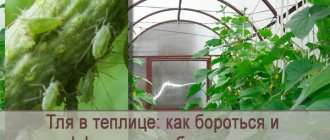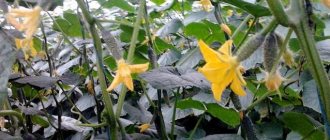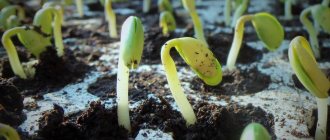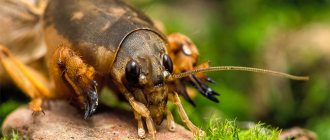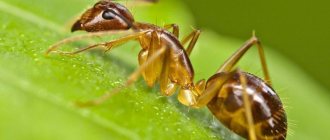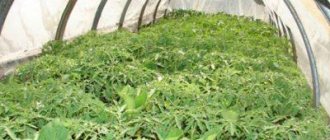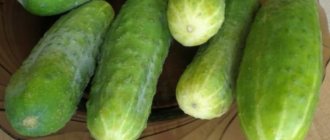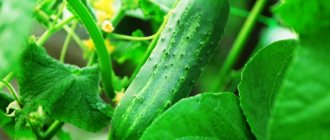The fight against aphids on roses can last the entire season and be carried out with varying success, because getting rid of these insects for good is almost impossible. However, there are methods that allow you to reduce the number of treatments and calmly enjoy the blooming of roses.
Experienced gardeners do not wait for characteristic marks to appear on the leaves, but carry out the first treatment against aphids in the spring, that is, they are proactive. But once, alas, is not enough, depending on the chosen product, you will have to repeat the steps from 3 to 7-9 times.
The first sign of aphids is an abundance of ants scurrying along the rose stems
general information
Aphids are a small but dangerous pest of garden crops. The size is only a few millimeters. Phytophage. It has a proboscis that pierces the surface of the stems and leaves, allowing access to the plant juices. There are winged and wingless representatives. Some species lay eggs, while others are viviparous. They secrete a lot of sweet solution - honeydew, which attracts other pests - insects and vertebrates. Life cycle:
- spring: the appearance of a larva from the egg, which feeds on plant sap →
- her molt →
- summer: parthenogenetic reproduction resulting in wingless females →
- after lignification of the stems, winged females are born (for migration) →
- autumn: birth of winged males.
The color is different and depends on the type of insect, age and habitat:
- black aphids are the most noticeable and easy to detect;
- white - almost transparent, with a slight milky tint;
- green aphids are the most problematic, as they successfully disguise themselves as greenery.
If a rose is covered in aphids, it needs to be rescued urgently, because insects feed on their sap. They spread viruses between them. They form galls - pathological growths on the leaves (less often on other parts), inside which certain insect development cycles take place.
What does the pest look like?
Aphids are very small insects that rarely grow more than 1-3 mm in length. However, it is not difficult to notice this pest, because it is practically never found alone. If aphids find ideal living conditions, they begin to multiply quickly, sometimes reaching hundreds of individuals on one particular plant in just a few days.
The body of an aphid is almost always colored in the color of the plant on which it lives. Most often it is green. She has noticeable antennae on her forehead, which are responsible for hearing and touch. Aphid vision is considered better than most other insects.
The aphid's mouth is a proboscis with which the insect pierces the surface tissues of stems or leaf blades, after which it sucks the juices out of them. There are aphids that can fly, and there are wingless individuals. Some species are excellent jumpers.
Aphids live over vast territories: in Western Europe, Siberia, and the Far East. The insect does best in humid and temperate climates. The peak of reproduction is fixed at the optimal temperature without sudden changes: if there are no droughts or heavy rains.
Aphid food is plant juice. Actually, by absorbing more and more juice as the population grows, this insect causes the greatest harm. In addition, aphids are dangerous because they can carry plant viruses, infecting healthy crops.
There may be several reasons why aphids appear on roses . It can simply simply switch from another culture. Or there are factors that are not at all obvious, because it is known that ants breed aphids. They love to feast on the sweetish secretions from aphids, which, by the way, are nicknamed “ ant cow” . This means that aphids can “graze” on roses at the will of the ants that have settled nearby.
Why do aphids appear on roses?
In some cases, finding out the cause will help you choose the right pest control method if you eliminate the original factor. These include, for example, the appearance of ants in the garden, which breed these insects as livestock. By destroying them, you can successfully solve the main problem.
Another common cause of invasion, which can be completely corrected, is insufficient care. The appearance of insects can be caused by:
- abundance of weeds;
- dense plantings;
- excess nitrogen (it makes plant tissues loose, juicy and soft);
- lack of preventive measures (one of the main ones is treating bushes with insecticides in spring and autumn).
However, the main reason for the invasion is that the rose is a sweet bait and the main delicacy for aphids. Therefore, among the many garden crops, she chooses this particular flower.
Natural enemies
There are many natural enemies of aphids in nature - these are birds and predatory insects that feed on them:
- The main destroyer of the insidious midge is the ladybug. She eats up to 50 aphids per day.
- Sand wasps, lacewings, crickets, cicadas, ground beetles, earwigs, toads, wasps and some types of spiders love to eat green pests.
- In addition to insects, there are also birds that eat harmful midges. These are tits, sparrows, warblers, etc.
To attract insects to the garden, you can plant greens with a strong smell: parsley, dill or other aromatic herbs. Feeders, drinking bowls or birdhouses are perfect for birds.
Signs
The main signs of an invasion are visible to the naked eye:
- leaves and petals curl and become deformed;
- in the first stages of infection, they turn red, their tips gradually dry out;
- eventually they turn completely black or yellow and fall off;
- the bushes are completely covered with a large number of small insects, covered with a sticky, shiny liquid (honeydew), which attracts other insects, literally a cloud of curling around;
- ants appear that were not on the site before (or that settled at a completely different end of the garden).
It is important to recognize in time that roses have been attacked by aphids. The earlier a problem is detected, the easier it is to deal with it. Aphids multiply very quickly and spread from one plant to another, infecting the entire garden. Therefore, for preventive purposes, it is so important to constantly inspect flowers (and other crops growing nearby) for the presence of these pests.
Insect species
Outdoors, rose bushes are infested by the roseate green aphid, which appears in late summer. This parasite has an oval green body and brown antennae. Body dimensions from 0.3 mm. Places of accumulation are young shoots and buds.
- House roses are more susceptible to white (indoor) aphid infestations. These are translucent small insects up to 0.5 mm in size, which in a short time form a colony that can completely cover a potted plant.
- Greenhouse roses can be affected by mealy aphids. This species has an oval body with setae on the side, covered with a white coating.
All types of parasites are characterized by high activity and fertility. You can find out more about different types of aphids here.
Agrotechnical measures
If an infestation is detected, measures must be taken before the infection spreads throughout the garden and destroys the bushes. Unfortunately, many property owners have no idea what to do in this situation. There are several ways to fight. They should be selected based on the number of insects and the stage of infection.
- Mechanical collection
Used when insects are just detected. You need to put on gloves and carefully remove the aphids from the rose, being careful not to damage the buds and leaves. Burn the collected pests outside the garden.
Some advise not to collect aphids with your hands, but to knock them down using a stream of water from a hose, aimed at the gathering of pests. However, this method does not guarantee that all parasites will be eliminated from the bushes. If you don't use the right amount of pressure, you can harm the plant.
- Trimming
After mechanical collection, carefully inspect all rose bushes. Remove curled and yellowed leaves and buds. Trim dried and dying shoots. Remove any lower branches that are in contact with the ground. If the plant is bushy, thin it out to create natural ventilation. Warmth and humidity are the best conditions for the reproduction of many pests.
- Tillage
Remove all weeds from the tree trunk. Remove old mulch, fallen leaves and branches. Carry out deep loosening. Sprinkle with mustard powder. After 2-3 days, apply root fertilizer and mulch again (peat, sawdust, pine litter, straw).
If it is too late to carry out mechanical collection, chemicals are used.
Harm to flowers
Aphids feed on plant sap . The leaves of the affected plant turn yellow and become deformed, shoot growth slows down, and then completely stops. A weakened plant does not tolerate temperature changes well, and its resistance to diseases decreases.
Important! Aphids not only harm the plant by drying it out, but are also carriers of viruses.
You can find out more about what aphids eat here.
Chemicals
Before treating roses with chemicals, wear protective clothing, gloves and a protective mask (or respirator), since the drugs are highly toxic. Do not allow solutions to come into contact with the skin. You need to keep in mind other disadvantages of this method:
- After such spraying, the petals cannot be used for cosmetic purposes (to make face lotions from them, for example) or culinary purposes (for making jam).
- If vegetable and fruit crops grow next to rose bushes, the fruits will absorb the “chemistry” and become inedible.
- Aphids are an insidious insect that quickly adapts to even the most powerful means, so it is recommended to change them.
It is advisable to use chemical preparations against aphids in cases where the situation is advanced and no other means (folk, natural, agricultural technology) can cope with insects. Insecticides are used for this purpose.
- Boric acid
Dilute 2 g in 10 liters of water. Carry out a one-time spraying.
- Dichlorvos
Buy a spray in the form of a can. In the evening, spray the bush generously. Cover with large cellophane for half an hour. Adults will die, but the larvae will have to be crushed and removed by hand.
- Aktara
Available in powder form. Effective instantly. III toxicity class. The package dissolves in 5 liters of water. Spray the inside of the leaves especially generously.
- Karbofos
Available in powder form. Toxic to humans. Dissolve 75 g in 10 liters of water. Spraying should only be done in calm weather.
- Spark Bio
Biological product. Paralyzes pests. Dissolve 5 ml in 5 liters of water.
- Intavir
Available in tablet form. 1 PC. crush, dissolve in a glass of water, pour into a bucket of water and stir. Processing is carried out exclusively in warm weather.
- Fitoverm
Manufacturers insist that the drug is absolutely safe, so it can be used to control aphids even during flowering. Dilute 4 ml in 1 liter of water. It is also used against aphids on indoor plants - for example, on Chinese rose (hibiscus).
There are other insecticides that have proven effective against aphids on roses:
- Lepidocide and Gaupsin are biological products that act sparingly (like Fitoverm);
- Kinmiks;
- Decis;
- Kalash;
- Tanrek;
- Aktellik;
- Fufanon-nova et al.
Spraying roses with chemicals is carried out once. If the aphids have not disappeared, the procedure is repeated after 7-10 days. But no one can guarantee its harmlessness. The bushes may begin to wither if such treatments are used too often.
Preventive measures
Prevention is necessary so that aphids cannot take root on roses, since fighting pests even with traditional methods is always more difficult than preventing their appearance. The main preventive measures include:
- regular watering, mulching;
- application of complex fertilizers;
- planting favorable neighboring plants, attracting enemies;
- constant monitoring and timely destruction of the first individuals by mechanical means.
Diseased or damaged parts of the bush must be removed in time to prevent the spread of parasites. It is also important to place the rose garden in the right place and provide it with proper, proper care. Such preventive measures will protect roses from damage not only by aphids, but also by other pests or diseases.
Folk remedies
If you fundamentally do not use chemicals to treat roses and prefer natural methods of fighting aphids, you can try to get rid of them with improvised means. But it should be understood that their effectiveness is several times less than store-bought powders, tablets and sprays. So don't be surprised that they may not work at all. Processing will have to be carried out more than once and often.
- Laundry soap
Rub 50 g of laundry soap (you can replace 10 ml of liquid soap). Dilute in 1 liter of water. Spray roses with this solution every evening until the aphids disappear.
- Garlic
Peel 1 large head of garlic, chop, add 1 liter of water. Insist for a day. Strain. Add 15 g of grated laundry soap. Spray every other day.
- Tobacco
Pour 100 g of tobacco powder into 1 liter of water and keep in a water bath for half an hour. After this, leave under a closed lid for 24 hours. Then add another 1 liter of water and 20 g of grated laundry soap. Process every other day.
- Baking soda
Dissolve 30 g of baking soda in 1 liter of water. Dip each shoot into the prepared solution for 10-15 minutes. Allows you to cure a rose in 1 procedure.
- Wood ash
Sift 400 g of wood ash. Pour 10 liters of water. Keep on moderate heat for 2 hours, stirring constantly. Cool, strain. The bushes are processed twice at 24-hour intervals.
- Onion peel
Pour 100 g of onion peel into 1 liter of hot water. Leave for a day. Strain. Process daily.
- Coca Cola
Method number 1. Mix 200 ml of Coca-Cola with 700 ml of water. Shake thoroughly. Wait until the foam settles and spray the bushes.
Method number 2. Release the gas from Coca-Cola. Mix with water in equal proportions and add liquid tar soap. Spray once a week for a month.
- Ammonia
Dilute 6 tbsp. l. ammonia in 1 liter of water. Spray the bushes once a week until the insects disappear completely.
- Potassium permangantsovka
Dissolve 5 g of potassium permanganate in 10 liters of water. Spray daily.
- Mustard
Method number 1. Scatter it dry under each bush. This will make the ants leave, and they will take their “personal livestock” with them.
Method number 2. Dilute 100 g of dry mustard in 10 liters of water. Mustard treatment of roses against aphids is carried out daily for a week.
- Sagebrush
A natural and quite effective folk remedy. Boil 700 g of dry wormwood (or 2 kg of fresh) for 10 minutes in a bucket of water. Cool. Spray generously once a week. Usually 2-3 treatments are enough to completely destroy aphids on roses.
- Milk and iodine
This unusual composition also helps fight aphids. Dissolve 20 ml of 5% iodine in a glass of milk. Pour into 1 liter of water. To stir thoroughly. Wear gloves. Take a rag and generously moisten the areas covered with aphids with the resulting solution. Carry out the procedure 2-3 times a week.
Prevention
What measures does it include:
- carry out spring treatment of roses with insecticides before budding (any of the above preparations);
- repeat the procedure in the fall, after the leaves have flown, just before wintering, but in time before frost;
- regularly do sanitary pruning, removing damaged and dried shoots, leaves and flowers (required in spring and autumn, in summer - as necessary);
- apply fertilizers necessary for the normal development of the plant in order to maintain its high resistance to infections (according to the seasonal schedule);
- monitor the soil under the bushes: remove weeds, loosen and mulch;
- water in a timely manner;
- regularly carefully inspect all the bushes in order to detect uninvited guests in time;
- care for all garden crops in this way, since aphids can spread to roses from other plants growing on the site.
As a preventative measure, make sure you have proper neighbors for your rose bushes. Plant plants next to your roses that repel aphids: mint, dill, sage, daisies, marigolds, parsley or lavender.
How to repel aphids using plants planted nearby
There are plants whose pungent odor repels aphids due to the content of phytoncides and essential oils. Planting them in a rose bed can help protect the bush from pest invasion. Such plants include:
- Spicy herbs (basil, celery, cilantro, rosemary, lemon balm, lavender, garlic). You will get a pest-free flower bed and juicy, vitamin-rich greens in one glass.
- More decorative flowers (nasturtium, marigolds, ageratum). Low-growing flowering helpers in the fight against aphids will also decorate the flowerbed.
